- Home
- Tom Clancy
Battle Ready Page 6
Battle Ready Read online
Page 6
“What do the Vietnamese expect me to do?” Zinni asked.
“Look,” Hamilton replied, “you’re not going to give them any tactical advice. They won’t need it. But this is where you are of value to them, this is what their expectations are.” He went on to explain technical matters Zinni needed to know in order to help the Vietnamese Marines in the Rung Sat—things like operating with the river assault groups, calling in artillery, calling in air support, calling in medevacs, and how all that worked.
After Hamilton left, Zinni had a hard time containing his excitement at finally seeing action.
THE NEXT MORNING brought reports that a rifle company had made contact with the VC. During the brief firefight that followed, the Marines took casualties, and the company was requesting a medical evacuation—“medevac,” a U.S. medevac helo. The rule was that U.S. helos had to be under a U.S. adviser’s control going into the landing zone (LZ). Though none of the advisers had gone out with the company, the pilots agreed to pick up an adviser and take care of the LZ coordinates from the air. Since none of the Vietnamese Marines on the ground spoke English, the entire affair would be managed by the adviser flying in with the medevac helos.
Hamilton and Hoar decided this was a good time for Zinni to get his feet wet.
Zinni was nervous and excited as the helos touched down and he climbed aboard. As they took off, he briefed the pilots, trying his best to act professional.
Minutes later, they were over the LZ—a muddy clearing.
The radio was crackling with excited Vietnamese chatter. Zinni did his best to respond, yelling in his best Vietnamese, trying to translate quickly, and then giving instructions in English to the pilots.
The Vietnamese popped a smoke grenade, Zinni confirmed the color,11 and they headed down toward a small opening in the tangled mangrove masses below. A little closer, he saw three or four Vietcong bodies in black pajamas strewn about the LZ and the poncho-covered bodies that were dead Marines. The wounded Marines were waiting for the helo at the edge of the zone.
As they touched down, the rotor wash from the helo’s blades sent debris flying. The Marines rushed to get the friendly casualties into the chopper and out of there before drawing enemy fire. The wounded were quickly loaded aboard, then the poncho-covered bodies were pushed in behind them. One landed in Zinni’s lap (he was sitting on the deck in the back, by the door). As he grabbed him so he wouldn’t tumble back out, the poncho flew open to reveal the pale gray-green corpse. They rapidly lifted off and headed for the evacuation hospital, with Zinni still holding the body, his eyes locked on the dead and wounded Marines. Halfway back he realized that his hand was still clutching the radio handset. He replaced it in its holder.
Cradling a dead body on the deck of the helo and staring at the bandaged and bleeding troops brought the war home for the first time. The high adventure he had imagined had a nasty side.
During the following days, Zinni went on several night missions with the Dong Nai boats and the River Assault Group craft, setting up ambushes. Some of these were successful; and in one instance they nailed a pair of VC sniper teams carrying Russian sniper rifles, scopes, and special ammunition in brand-new leather cases.
ZINNI WAS in the Rung Sat from April 3 to April 21. He then received orders to report to the 5th Battalion in Binh Dinh Province (II CTZ) and Operation Pershing—the most fiercely contested of Vietnamese Marine combat operations. He was there three times: April 24 to May 13; June 20 to August 10; and November 8 to December 13.
By the midpoint of his second assignment to Binh Dinh Province—sometime toward the end of June—Tony Zinni had become technically proficient in the arts of combat.
These skills came from several sources: from the day in, day out experience of the firefights themselves—calling in medevacs, calling in artillery and air, coordinating with U.S. units, and doing it over and over again under great stress; learning from the more seasoned and experienced advisers (like Joe Hoar and Bob Hamilton); learning from the Vietnamese Marines, especially in those tactical operations they performed well; and finally, from his own passion for mastering the arts of war. He really wanted to figure out what went on in combat. When he got into firefights—especially firefights with North Vietnamese or hard-core Vietcong units—he was fighting an enemy who possessed tremendous fighting skills. They were a tough enemy (not ragtag, like the Iraqi Army). Trying to take this war apart, figuring out what worked and what gave his guys the advantage, meant imagining how somebody on the other side—a North Vietnamese captain or other commander—was deciding how he could get the advantage. It was a contest of wills, intellects, and experience. “What is he thinking? What is he trying to do? What do I need to do to outguess him, to outplay him on this field?”
By the end of his tours in Vietnam, Zinni had become a master of the combat arts.
OPERATION PERSHING
Though several factors made operations in Binh Dinh Province more difficult than in other areas, the worst of these were the deadly booby traps found virtually everywhere in the province. The VC were masters of every kind of booby trap, from the sophisticated to the makeshift; and for reasons that remain mysterious to Zinni, the Vietnamese Marines were especially vulnerable to them. Despite their well-demonstrated field skills and understanding of their enemy, the majority of Vietnamese Marine casualties suffered on Operation Pershing came from booby traps. In one instance, twenty-two Marines, including an adviser, were killed or wounded at a stream crossing where the VC had put in a “daisy chain” string of explosives under remote control.
The VC especially liked to rig booby traps along trails, paths, streams, and other likely movement lines. Sometimes small signs would warn other VC or civilians friendly to their cause. Zinni and his companions learned to watch for these—rocks or twigs arranged on a path or bent trees near a stream crossing, or the like. And they tried to avoid trails and obvious lines of communication. Since booby traps and the kill zones of ambushes tended to be oriented along these lines of movement, the best tactic was not to travel parallel to them but to zigzag across, always approaching from right angles. Zigzagging permitted the Marines to come in behind these positions.
Trails and streams were always crossed as danger areas, following a predetermined and rehearsed drill: The point signaled the trail ahead; a machine gun or automatic rifle was positioned to cover the crossing; the far side was checked; and when there was a “clear to go” signal, the Marines crossed in teams. The drill could be more elaborate for larger danger areas, such as clearings or paddies.
At one trench, hedgerow,12 and trail complex in an area loaded with booby traps, it was decided to go one at a time. When Zinni’s turn came, he ran and jumped the trench, but as he landed, he felt his boot drag across a wire. He immediately went limp, hit the ground, and flattened out as a muffled explosion detonated behind him. He wasn’t hit, he realized, to his immense relief. But when he looked back into the dust-filled trench, he noticed movement at the bottom. A Marine was lying there, one of the company cooks, in obvious pain, his face mangled. Since they were crossing one at a time, he should not have been there; but he had rushed across right on Zinni’s heels, contrary to instructions.
Though he had taken a blast in his upper body, remarkably he was still alive. He’d been carrying a small cage with two doves in it, no doubt dinner. The doves were unharmed.
Zinni and other nearby Marines jumped into the trench to help him. Zinni then called in a medevac, but did not hold out much hope, since the man was bleeding badly from both eyes.
Several months later, Zinni learned that he had survived, though with the loss of his eyes.
At another path crossing one day, Zinni stepped into a shallow, camouflaged pit. He tensed, expecting sharp bamboo stakes to pierce his foot; but nothing happened. Puzzled but relieved, he climbed out, and the camouflage was cleared away, revealing the real nature of this booby trap—though fortunately, its shelf life had expired. At the bottom of the pit was a small de
ad snake, a krait, one of the most poisonous of all the vipers. (There had been no food in the pit, and it could not climb the pit’s sheer walls.)
The VC also placed booby traps in likely helicopter landing zones, making heliborne assaults sporty and medevacs dangerous. Since the American adviser ran the medevacs, Zinni had to check out the zones to ensure they were safe for the helicopters. He always performed this task with great care, concentration, and gingerly placed steps.
In placing booby traps, the VC did not distinguish combatants from noncombatants. Any kind of cooperation was punished. Civilians who assisted Vietnamese forces less often came home to bombs set to go off at their arrival. Even civilians required to gather in designated areas for processing of identification paperwork or for government information programs might find explosive devices in their homes or villages. Since the processing was compulsory, the ordinary people were once again caught between a rock and a hard place.
THEIR SUSCEPTIBILITY to booby traps aside, the Vietnamese Marines were masters of fieldcraft.
The Vietnamese Marines traveled light. They lived off the land, partly out of necessity and partly out of the importance they placed on being light and mobile like the enemy. This points out the most significant difference between the Vietnamese Marines and their American allies.
Americans always took it for granted that the full might of America was behind them. Not only did they expect to get three squares a day, but American units always operated under the conviction that, no matter what, they would somehow get bailed out and that American firepower would prevail. Sure, there might be an occasion where you got stranded for a while before help came, but eventually help was going to get to you—rescue, firepower, or logistics.
The Vietnamese Marines did not have that certainty. They never knew if they were going to eat on any particular day. When they got in a firefight, there was no guarantee that the cavalry was going to come and save them. They knew they had to fight with what they had.
Thus they had no use for the heavy loads American soldiers carried, and their carelessness with weapons and supplies; and they were happy to do without the daily helo resupply lifts that gave away positions.
The Vietnamese Marines were masters of make-dos and work-arounds. They ingeniously prepared fighting positions, living facilities, early warning alarms, and many other needs from what was available in the bush. A premium was placed on quick reaction and agility on enemy contact. They were well aware of these qualities in the enemy they faced.
Their gear was not only light but practical. They slept in nylon hammocks tied with nylon cord, compact enough to fit into the cargo pocket of their tiger-striped field uniform. The U.S. jungle hammock, by contrast, was heavy and bulky and totally unsuitable for the field. Cooking stoves were small and made of lightweight aluminum, as were their food containers. Their packs were the original rucksacks that made stowing and carrying gear easy for infantry units on the move. They rarely wore flak jackets and preferred camouflaged soft hats rather than helmets, especially on patrols. Light, loose-fitting nylon rain gear was often purchased by the Marines to replace the heavy rubberized U.S. ponchos they were issued. They did, however, cherish the soft American poncho liner, which, along with the jungle boot, was probably the best piece of gear to come out of the Vietnam War.
Their weapons were a hodgepodge of World War Two American small arms, mortars, machine guns, recoilless rifles, and artillery pieces. These included M-1 rifles, carbines, submachine guns, and other vintage weapons.
During Zinni’s tour in 1967, the VNMC received the M-16 rifle and M-60 machine gun, but the process was closely controlled by the U.S. The policy was that no Vietnamese units could get them until every American unit had them, and then the Marines and airborne units would be the first to receive them. In reality, the Vietnamese already had a few M-60 machine guns before they were officially supposed to get them. They’d either been captured from the enemy or scrounged from U.S. units by the advisers.
Reports of the M-16’s unreliability preceded its arrival. The plan was to pull the VNMC battalions back, one at a time, to the national training center for two weeks to switch weapons and go through a training program on the new rifle.
U.S. Marines brought the weapons to the center and oversaw the delivery and training. But just as the first units to receive the new rifles began their training, an emergency developed in the Mekong Delta area. The units were pulled out and sent to engage a large enemy force there, even before they had actually fired their new weapons (they’d barely gotten the first classes on care and cleaning). They performed brilliantly, defeating a tough force in fierce fighting. The fact that no weapons jammed or malfunctioned drew considerable attention from the U.S. military command; and an investigation was launched. But the explanation was simple: The Vietnamese Marines cleaned their weapons. They were meticulous—almost obsessed—with weapons care, often complaining to Zinni about American carelessness with weapons and equipment.
They were just as meticulous about fire discipline. They were, for example, masters at hiding their crew-served weapons and not opening up in response to probes by North Vietnamese or mainline VC units (the idea was to get them to fire so they could pick out the key weapons they needed to take out).
The emphasis on care and conservation carried over to most other areas.
Like all Vietnamese, the Vietnamese Marines enjoyed the midday break. Unless operational necessity demanded otherwise, they would stop to string up their hammocks for a couple of hours during the hottest part of the day for a noon siesta. But they also took care to rest at any other time that offered itself. Whenever possible, they conserved resources, strength, and the energy of the unit.
Their endurance was remarkable. They could walk all day, day after day. But they were not especially strong. Rather, they tried to pace themselves and conserve energy.
American commanders were all in a hurry. They wanted to end the war on their one-year tour of duty. Vietnamese commanders realized they would be in it for the duration. Though they never backed down or failed to fight bravely, they did weigh risks carefully and approach battle methodically. Plunging headlong into battle, as Americans liked to do, was not an option for the Vietnamese.
Zinni had this truth pressed home on an operation in II CTZ. Here is how he remembers it:
It was summer, and our VNMC battalion had been operating for weeks in an area astride Highway 1 when we pulled back for a much-needed day of rest in a village along the highway. The battalion commander, the senior adviser, and most of the officers and troops went to a nearby city for an R & R break, while I stayed behind with the units that were the designated security element. The battalion operations officer, a lieutenant, was the officer in charge. He was a bright young officer and we had become instant friends.
On one hot summer day, with the stay-behind troops resting, cleaning equipment, or manning the small security guard, an excited, very animated woman came running up to our location.
“The VC are holding a meeting with local communist bigwigs in a nearby hamlet west of the highway,” she cried.
“We have to go get them,” I told the ops officer.
He was not so sure. All the commanders were gone and this was a big decision for him, especially since he only had bits and pieces of units available for the mission.
But he was an aggressive officer, and I knew I could get him to go. And that’s what happened. We quickly grabbed a group of Marines, saddled them up, and charged off.
As luck would have it, we caught the VC as they were leaving the hamlet after their meeting broke up. A running, chaotic gun battle followed, as we chased them into the countryside. The chase went on for several hours, and we moved farther and farther into the brushy foothills west of the highway.
During the pursuit, we managed to capture one VC and could tell from the blood trails that we had hit others. But in our excitement and enthusiasm we failed to realize how far we were moving from our base of operati
ons. Enemy fire was also picking up, and the terrain was becoming more rugged. Though I didn’t realize it then, it was becoming distinctly possible that we would be drawn into a trap.
Eventually, we received a radio call from the obviously angry battalion commander, ordering us to break off contact and return to the base area.
On the way back, I realized I had put my Vietnamese lieutenant buddy in a bad position. He was not looking forward to seeing the battalion CO.
And sure enough, the commander had harsh words for him, and likewise my senior adviser had harsh words for me. Though I was upset that we’d had to break contact, I kept quiet about that. Instead, I tried to take the fall for the action, and explained that I had convinced my friend to go.
Later, the battalion commander asked to speak to me privately. He was a highly decorated officer, tactically brilliant and courageous; and I had great respect for him.
“Look,” he explained to me, “my unit is not a U.S. Marine unit. It’s smaller and less capable, we don’t have a steady stream of replacements flowing into it, and I can’t rely on the formidable arsenal of firepower that U.S. units have at their disposal.13
“My troops,” he continued, “have fought for years; they’ll fight for many more; and the enemy will still be there tomorrow. All of this means I have to carefully choose where and when I take risks that might bring me a disadvantage on the battlefield.14
“This is not,” he explained, “a matter of courage, aggressiveness, or fighting spirit; and I hope you’ve seen enough of those qualities in my Marines to know that wasn’t the issue.”

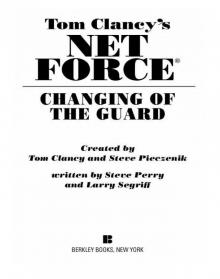 Changing of the Guard
Changing of the Guard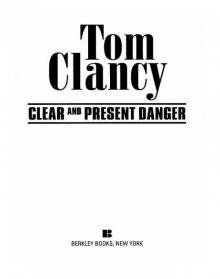 Clear and Present Danger
Clear and Present Danger Hounds of Rome
Hounds of Rome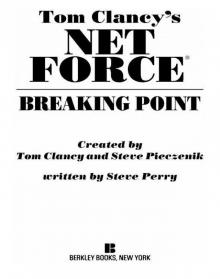 Breaking Point
Breaking Point Tom Clancy's Jack Ryan Books 7-12
Tom Clancy's Jack Ryan Books 7-12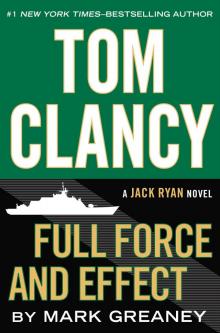 Full Force and Effect
Full Force and Effect The Archimedes Effect
The Archimedes Effect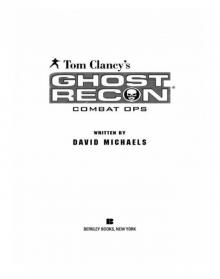 Combat Ops
Combat Ops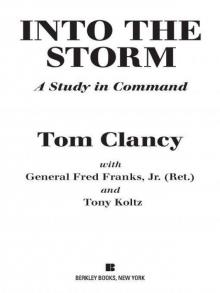 Into the Storm: On the Ground in Iraq
Into the Storm: On the Ground in Iraq Under Fire
Under Fire Point of Impact
Point of Impact Red Rabbit
Red Rabbit Rainbow Six
Rainbow Six The Hunt for Red October
The Hunt for Red October The Teeth of the Tiger
The Teeth of the Tiger Conviction (2009)
Conviction (2009)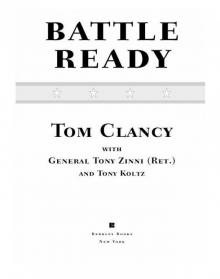 Battle Ready
Battle Ready Patriot Games
Patriot Games The Sum of All Fears
The Sum of All Fears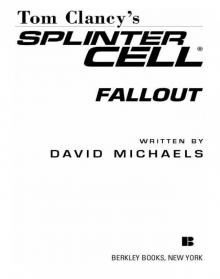 Fallout (2007)
Fallout (2007) Red Storm Rising
Red Storm Rising The Cardinal of the Kremlin
The Cardinal of the Kremlin Executive Orders
Executive Orders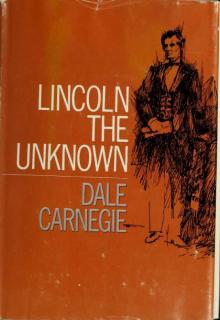 Lincoln, the unknown
Lincoln, the unknown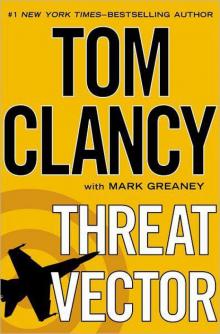 Threat Vector
Threat Vector The Hunted
The Hunted Shadow Warriors: Inside the Special Forces
Shadow Warriors: Inside the Special Forces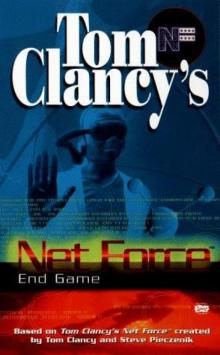 End Game
End Game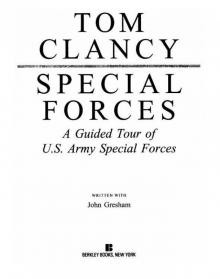 Special Forces: A Guided Tour of U.S. Army Special Forces
Special Forces: A Guided Tour of U.S. Army Special Forces Locked On
Locked On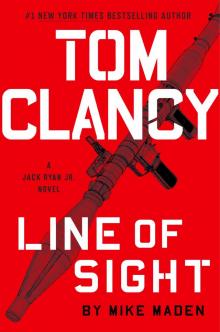 Line of Sight
Line of Sight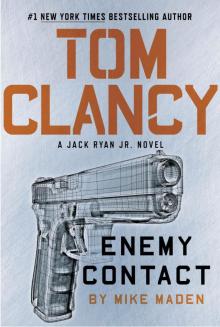 Tom Clancy Enemy Contact - Mike Maden
Tom Clancy Enemy Contact - Mike Maden Fighter Wing: A Guided Tour of an Air Force Combat Wing
Fighter Wing: A Guided Tour of an Air Force Combat Wing Springboard
Springboard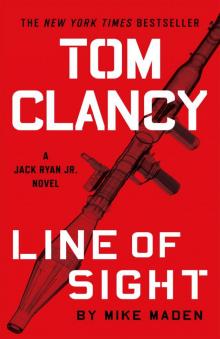 Line of Sight - Mike Maden
Line of Sight - Mike Maden EndWar
EndWar Dead or Alive
Dead or Alive Tom Clancy Support and Defend
Tom Clancy Support and Defend Checkmate
Checkmate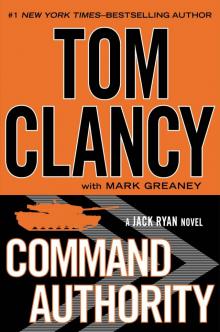 Command Authority
Command Authority Carrier: A Guided Tour of an Aircraft Carrier
Carrier: A Guided Tour of an Aircraft Carrier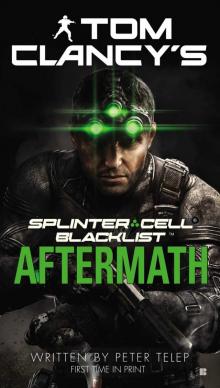 Blacklist Aftermath
Blacklist Aftermath Marine: A Guided Tour of a Marine Expeditionary Unit
Marine: A Guided Tour of a Marine Expeditionary Unit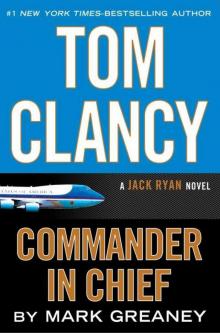 Commander-In-Chief
Commander-In-Chief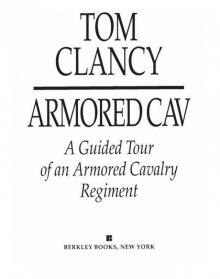 Armored Cav: A Guided Tour of an Armored Cavalry Regiment
Armored Cav: A Guided Tour of an Armored Cavalry Regiment Tom Clancy's Jack Ryan Books 1-6
Tom Clancy's Jack Ryan Books 1-6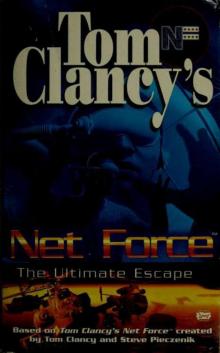 The Ultimate Escape
The Ultimate Escape Airborne: A Guided Tour of an Airborne Task Force
Airborne: A Guided Tour of an Airborne Task Force Debt of Honor
Debt of Honor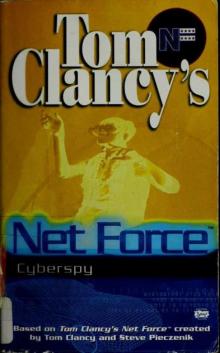 Cyberspy
Cyberspy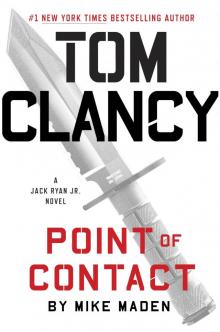 Point of Contact
Point of Contact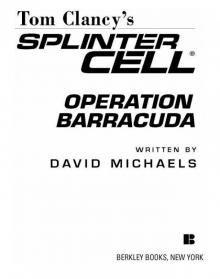 Operation Barracuda (2005)
Operation Barracuda (2005)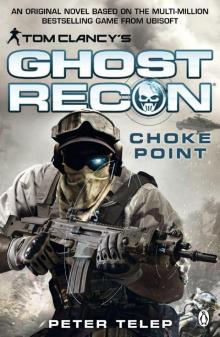 Choke Point
Choke Point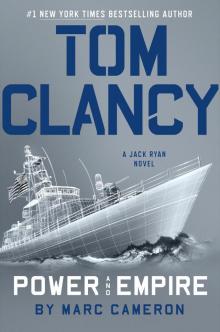 Power and Empire
Power and Empire Every Man a Tiger: The Gulf War Air Campaign
Every Man a Tiger: The Gulf War Air Campaign Endgame (1998)
Endgame (1998)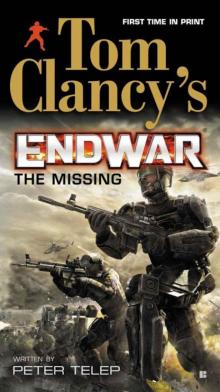 EndWar: The Missing
EndWar: The Missing Splinter Cell (2004)
Splinter Cell (2004) The Great Race
The Great Race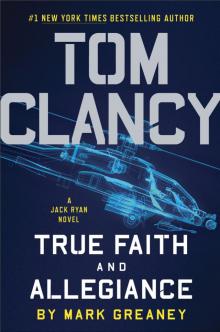 True Faith and Allegiance
True Faith and Allegiance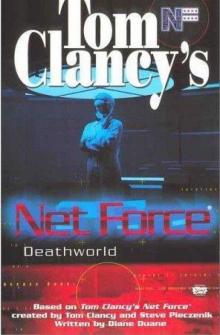 Deathworld
Deathworld Ghost Recon (2008)
Ghost Recon (2008)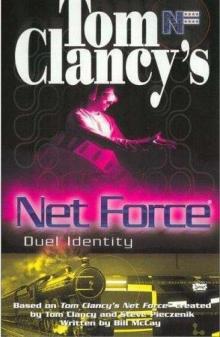 Duel Identity
Duel Identity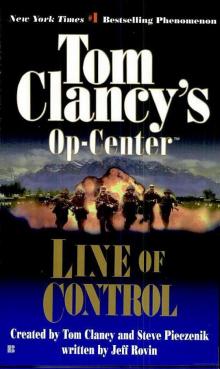 Line of Control o-8
Line of Control o-8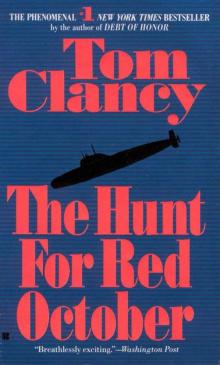 The Hunt for Red October jr-3
The Hunt for Red October jr-3 Hidden Agendas nf-2
Hidden Agendas nf-2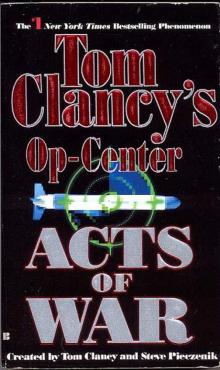 Acts of War oc-4
Acts of War oc-4 Ruthless.Com pp-2
Ruthless.Com pp-2 Night Moves
Night Moves The Hounds of Rome - Mystery of a Fugitive Priest
The Hounds of Rome - Mystery of a Fugitive Priest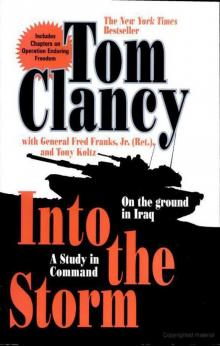 Into the Storm: On the Ground in Iraq sic-1
Into the Storm: On the Ground in Iraq sic-1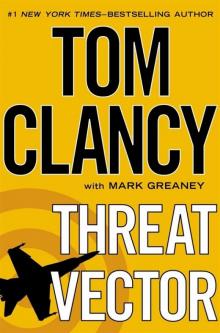 Threat Vector jrj-4
Threat Vector jrj-4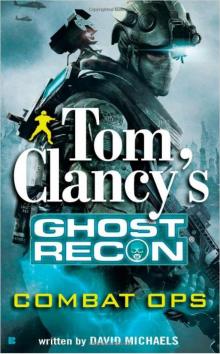 Combat Ops gr-2
Combat Ops gr-2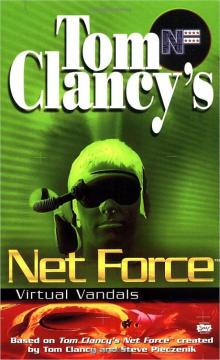 Virtual Vandals nfe-1
Virtual Vandals nfe-1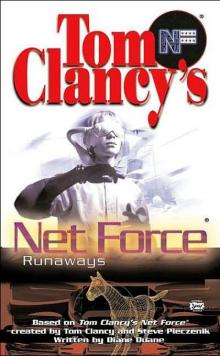 Runaways nfe-16
Runaways nfe-16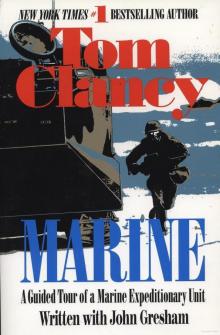 Marine: A Guided Tour of a Marine Expeditionary Unit tcml-4
Marine: A Guided Tour of a Marine Expeditionary Unit tcml-4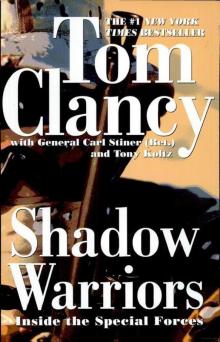 Shadow Warriors: Inside the Special Forces sic-3
Shadow Warriors: Inside the Special Forces sic-3 Jack Ryan Books 1-6
Jack Ryan Books 1-6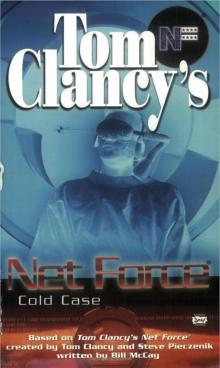 Cold Case nfe-15
Cold Case nfe-15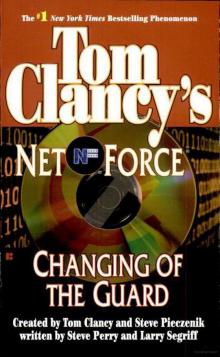 Changing of the Guard nf-8
Changing of the Guard nf-8 Splinter Cell sc-1
Splinter Cell sc-1 Battle Ready sic-4
Battle Ready sic-4 The Bear and the Dragon jrao-11
The Bear and the Dragon jrao-11 Fighter Wing: A Guided Tour of an Air Force Combat Wing tcml-3
Fighter Wing: A Guided Tour of an Air Force Combat Wing tcml-3 Patriot Games jr-1
Patriot Games jr-1 Jack Ryan Books 7-12
Jack Ryan Books 7-12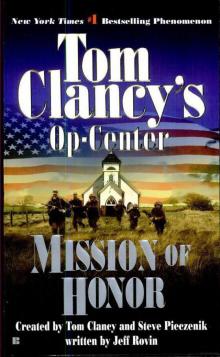 Mission of Honor o-9
Mission of Honor o-9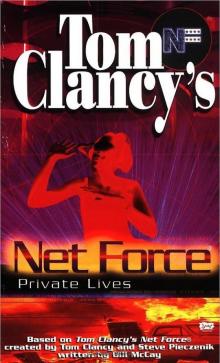 Private Lives nfe-9
Private Lives nfe-9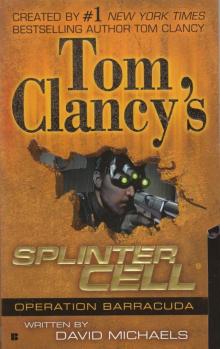 Operation Barracuda sc-2
Operation Barracuda sc-2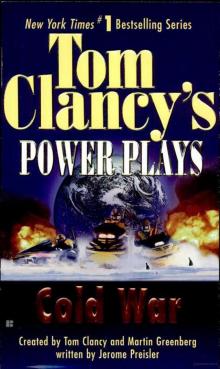 Cold War pp-5
Cold War pp-5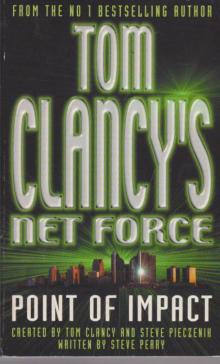 Point of Impact nf-5
Point of Impact nf-5 Red Rabbit jr-9
Red Rabbit jr-9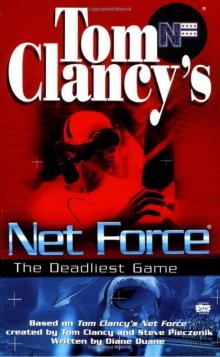 The Deadliest Game nfe-2
The Deadliest Game nfe-2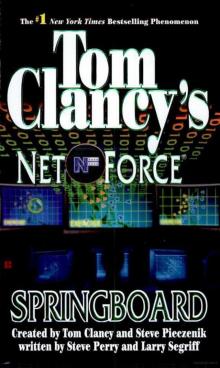 Springboard nf-9
Springboard nf-9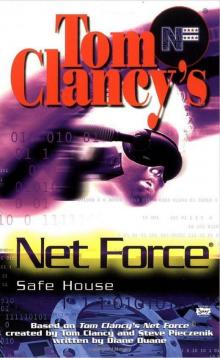 Safe House nfe-10
Safe House nfe-10 EndWar e-1
EndWar e-1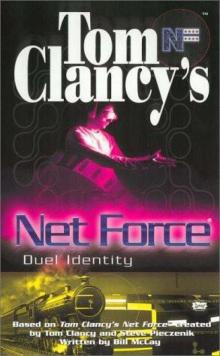 Duel Identity nfe-12
Duel Identity nfe-12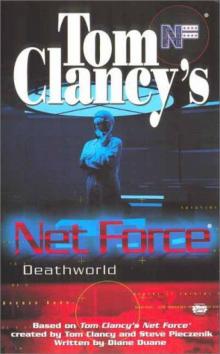 Deathworld nfe-13
Deathworld nfe-13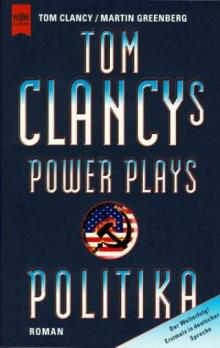 Politika pp-1
Politika pp-1 Rainbow Six jr-9
Rainbow Six jr-9 Tom Clancy's Power Plays 1 - 4
Tom Clancy's Power Plays 1 - 4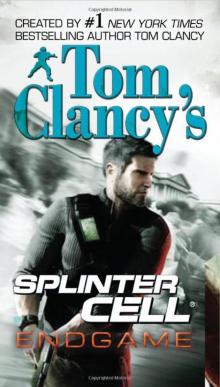 Endgame sc-6
Endgame sc-6 Executive Orders jr-7
Executive Orders jr-7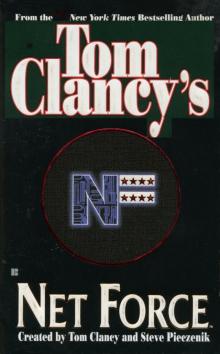 Net Force nf-1
Net Force nf-1 Call to Treason o-11
Call to Treason o-11 Locked On jrj-3
Locked On jrj-3 Against All Enemies
Against All Enemies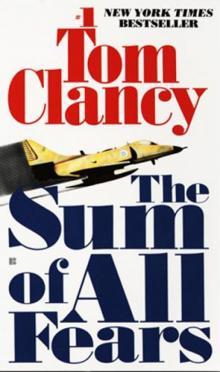 The Sum of All Fears jr-7
The Sum of All Fears jr-7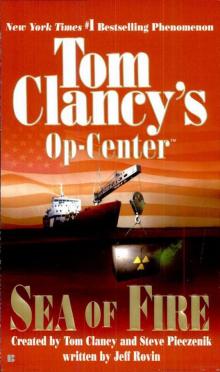 Sea of Fire o-10
Sea of Fire o-10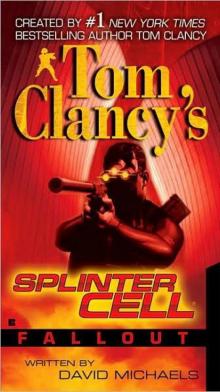 Fallout sc-4
Fallout sc-4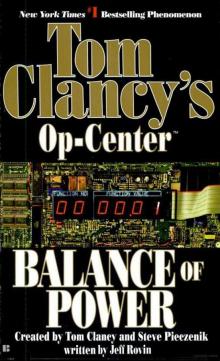 Balance of Power o-5
Balance of Power o-5 Shadow Watch pp-3
Shadow Watch pp-3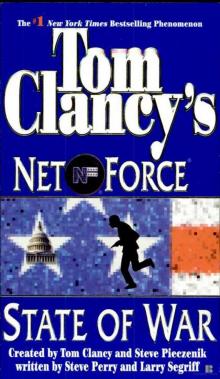 State of War nf-7
State of War nf-7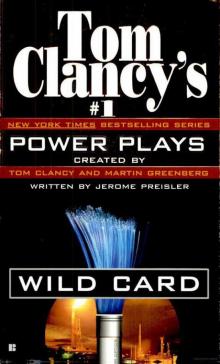 Wild Card pp-8
Wild Card pp-8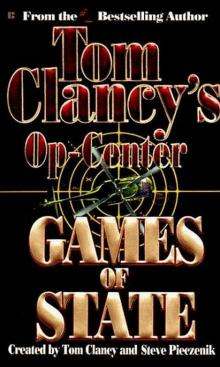 Games of State o-3
Games of State o-3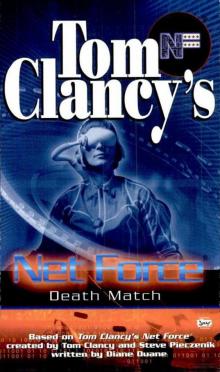 Death Match nfe-18
Death Match nfe-18 Against All Enemies mm-1
Against All Enemies mm-1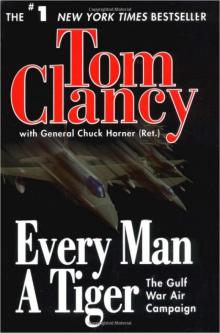 Every Man a Tiger: The Gulf War Air Campaign sic-2
Every Man a Tiger: The Gulf War Air Campaign sic-2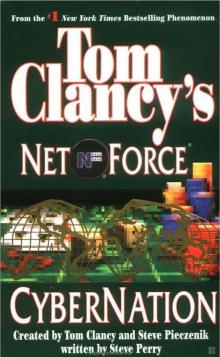 Cybernation nf-6
Cybernation nf-6 Support and Defend
Support and Defend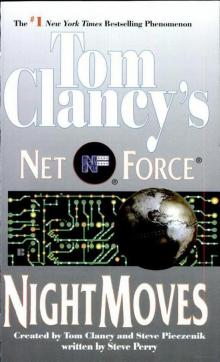 Night Moves nf-3
Night Moves nf-3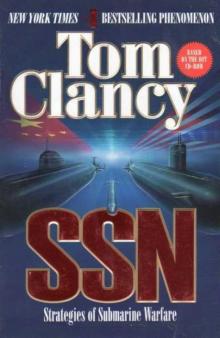 SSN
SSN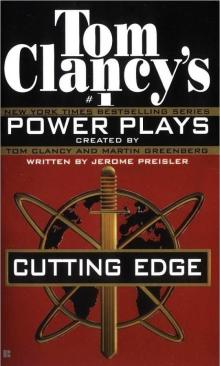 Cutting Edge pp-6
Cutting Edge pp-6 The Cardinal of the Kremlin jrao-5
The Cardinal of the Kremlin jrao-5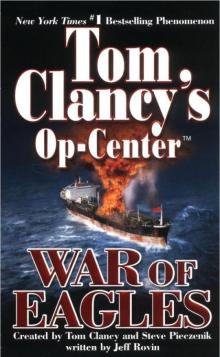 War of Eagles o-12
War of Eagles o-12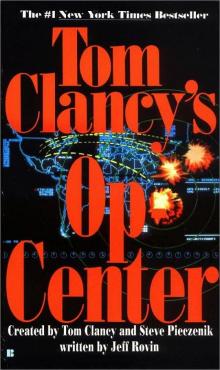 Op-Center o-1
Op-Center o-1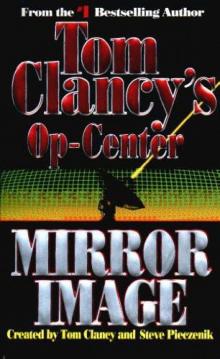 Mirror Image o-2
Mirror Image o-2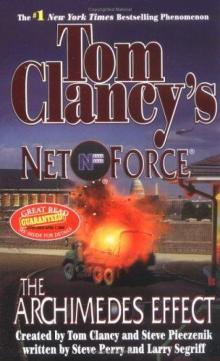 The Archimedes Effect nf-10
The Archimedes Effect nf-10 Teeth of the Tiger jrj-1
Teeth of the Tiger jrj-1 Bio-Strike pp-4
Bio-Strike pp-4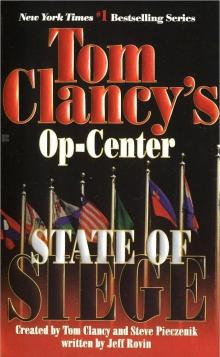 State of Siege o-6
State of Siege o-6 Debt of Honor jr-6
Debt of Honor jr-6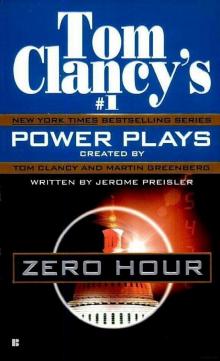 Zero Hour pp-7
Zero Hour pp-7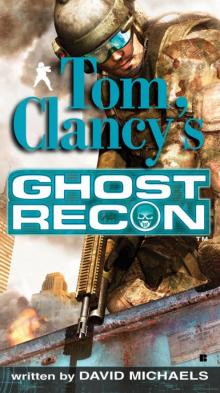 Ghost Recon gr-1
Ghost Recon gr-1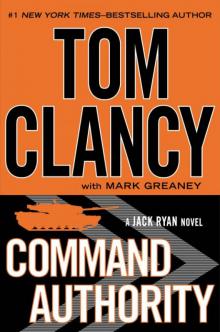 Command Authority jr-10
Command Authority jr-10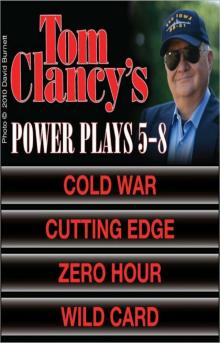 Tom Clancy's Power Plays 5 - 8
Tom Clancy's Power Plays 5 - 8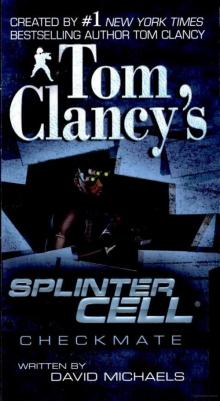 Checkmate sc-3
Checkmate sc-3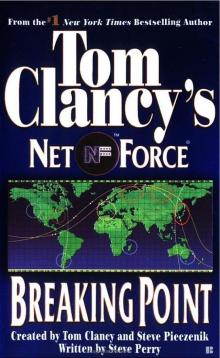 Breaking Point nf-4
Breaking Point nf-4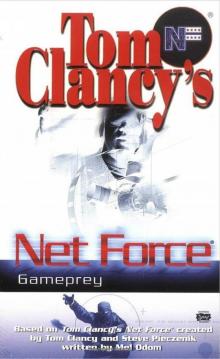 Gameprey nfe-11
Gameprey nfe-11 The Hunted e-2
The Hunted e-2 Hidden Agendas
Hidden Agendas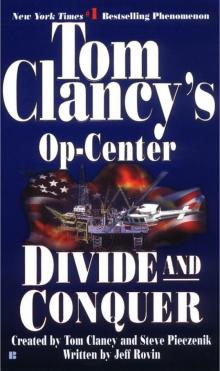 Divide and Conquer o-7
Divide and Conquer o-7